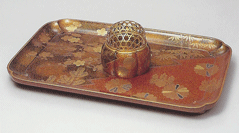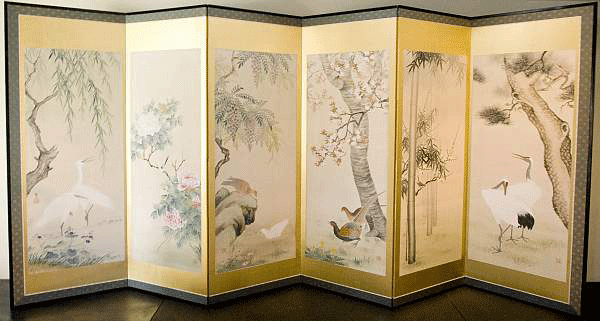 Perpetuating the art of “listening” to fragrances
Perpetuating the art of “listening” to fragrances
The appreciation of delicate fragrances produced by burning incense has a long and proud tradition in Japan. Known as Kodo (literally, the “way of scent”), it was a pastime cultivated by Japan’s samurai class, alongside flower arranging and the tea ceremony. As with the other two rituals, kodo was seen as a way to spiritual improvement, and its mystical nature is reflected in the fact that practitioners still speak of “listening” to the fragrances.
Kodo is a spiritual art. It hones the senses. Perhaps, in the busy modern world, it is more necessary than ever to entrust our souls to the vaguely drifting feeling brought on by the exquisite scent of incense.
Presented in conjunction with the program Scent of the Shining Prince: Incense and The Tale of Genji, sponsored by the Japan Society of Northern California
November 15th – November 30th
Opening night on November 15th, 5-7pm
Gallery talk by Kihachirou Nishiura with a demonstration of Soradaki 空薫; scent in ancient Japanese court. Please join us!
The Journey of Japanese Incense
It begins under the flower of peace, before the fall of the plum blossoms, before monks burning incense in Japanese temples, before the rising scents from scented kimono sleeves mixed with the fragrant incense of natural pine, cedar, lavender, and the flowers of the sun.
The art of Japanese incense making has long been a tribute to nature itself. One of the great Awaseko of early Japan was called “Baika” which is Japanese for plum.
Today, the Japanese incense ceremony called Kodo, or Kou-dou is a refined art that has been handed down for centuries. It takes many years of study, and a great deal of practice to perform the incense ceremony properly. The art of the Japanese Tea Ceremony is itself very difficult and takes about 15 years to master. The art of Kodo takes over 30 years!
Kodo can be appreciated on many levels, you can participate in one of the games or ceremonies given by a Kodo Lecturer, or Kodo master, in many department stores and cultural centers in Japan, or you can learn the basics and play the games at home with your friends.
Seasonally Appropriate Artwork Accessories in Japanese Tradition and Custom
We have an extensive inventory from which to select seasonally appropriate fine artwork and artifacts, such as scrolls and screens. Following Japanese tradition and custom, accessorize your home with seasonal displays.
Below is one scroll — view more photos and details
